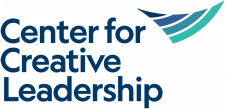- Learning
Learning-Agile Leaders
Organizations need leaders who recognize when their current skill sets and knowledge are insufficient and irrelevant and who are willing to change course and learn new approaches - says Michael Campbell, Senior Research Analyst at CCL.
By now we are all probably getting tired of hearing about the increasingly complex world we live in – we know it, we live it, and we want to know what to do about it. As a result, many organizations are turning to leaders to navigate these complex challenges, but organizations continue to struggle finding and developing leaders who are able to change and evolve as quickly as the operating environment. What these organizations are looking for are leaders that demonstrate learning agility.
In a recent White Paper published by the Center for Creative Leadership (CCL), researchers at Columbia University’s Teacher’s College describe learning agility as “a mind-set and corresponding collection of practices that allow leaders to continually develop, grow, and utilize new strategies that will equip them for the increasingly complex problems they face in their organizations.”
For individuals looking to become more learning-agile, and for leadership development practitioners looking for ways to develop learning-agile leaders, the researchers at Columbia University suggest five ways to practice disciplined personal development that increase a leader’s learning agility.
Challenge Assumptions and Question the Status Quo
Since leadership is learned from experience, it can be easy for us to become too comfortable with “doing things the way they’ve always been done”. Even when we receive feedback that the organization wants to approach a challenge differently, we often leverage past experiences and replicate ways of working because it “gets results” with a minimum amount of expended energy. However, high learning-agile leaders deliberately challenge themselves to come up with new solutions. The next time you encounter a challenge and feel yourself moving quickly to a tried and true approach, ask yourself two questions: 1/ What is holding me back from trying something new and different? 2/ How would I approach this situation differently?
Remain Calm in the Face of Difficulty
Dealing with ambiguity can be stressful and it can become difficult to stay present and in the moment’ when you start to feel overwhelmed by challenging situations. Leaders must fight the urge to stop listening and observing what is happening and just ‘do what needs to be done’. High learning-agile leaders are able to remain calm and engaged even in stressful situations.
One of the most important ways to manage your stress is to know the signals. Pay attention to your body’s response to stress. The sooner you recognize you’re under stress the more quickly you can take steps to rebound from it.
Hit the Pause Button and Practice Reflection
One of the most common ways individuals and organizations look to build leadership capability is by giving individuals challenging assignments and new experiences. However, simply having a new experience doesn’t guarantee that new learning has occurred. It can be very difficult for leaders to pause and reflect on their experiences and unpack the lessons learned. Simply ask yourself two questions: 1/ What did I do today, this week, this month? 2/ What, if anything, have I learned from it? Asking yourself these questions will help you practice the discipline of reflection.
Take Risks and Try Something New
The problem with complex challenges and ambiguity is that success is not always guaranteed. High learning-agile leaders see the opportunity inherent in complex challenges and are willing to put themselves out there. The risk is not so much as to derail a person’s career, and not so little as to keep the person in their comfort zone.
Few people like to step out of their comfort zone. As you look to build your learning agility, identify a challenge that you know will stretch your current abilities. Then identify key stakeholders and tell them what you’re trying to learn and ask for their support.
Be Aware of Defensiveness
Feedback is a gift, but for many leaders the natural response to feedback is to become defensive. High learning-agile leaders resist the temptation to become defensive in the face of adversity, and they don’t personalize the feedback they receive.
If you can recognize when you become defensive, you can use the practice of reflection to look for opportunities to learn and develop. If receiving feedback feels uncomfortable, try to identify three to five colleagues you trust and ask them to watch for specific behaviours and share their observations with you.
Whether as an individual leader, a practitioner, or an organization, learning agility offers a method for developing leaders who are more adaptable to the changing complexity of our world. Learning agility doesn’t always come naturally to individuals and organizations because it requires a degree of comfort and tolerance for mistakes and failures. Those organizations who are able to create a culture that defines its tolerance for risk, and those leaders who apply these suggestions, will find they have a competitive advantage in developing the leadership capability needed to effectively navigate through the complexity
A top-ranked, global provider of leadership development. By leveraging the power of leadership to drive results that matter most to clients, CCL transforms individual leaders, teams, organizations and society.
ARTICLES YOU MIGHT LIKE
VIEWPOINT
For Thomas Misslin, transformation rather than training is the aim of executive education at emlyon business school
DEVELOPING LEADERS QUARTERLY MAGAZINE AND WEEKLY BRIEFING EMAILS


































